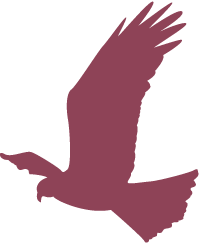 Endangered birds in Kyoto Prefecture
Endangered birds in Kyoto Prefecture
Kyoto Prefecture is home to 358 avian species from 73 families and 23 orders, of which 344 species from 68 families and 22 orders are native. Fourteen species from nine families and five orders are introduced species. The Kyoto Prefecture Red Data Book lists 108 species of native birds, including no extinct, eight critically endangered, 48 endangered, 50 vulnerable, and two near threatened & least concern species. Accordingly, 108 of 344 native species in the prefecture are threatened, accounting for 31.3% of all native species.
The List of Biological and Geological Components of the Natural Environment of Kyoto Prefecture (Japanese)
Kyoto Prefecture Red List (Japanese)
Kyoto Prefecture Red List
| Extinct | Critically Endangered | Endangered | Vulnerable | Near Threatened & Least Concern | Sum | Total number of species in Kyoto | |
|---|---|---|---|---|---|---|---|
| Birds | 0 | 8 | 48 | 50 | 2 | 108 | 358 |
Typical endangered species
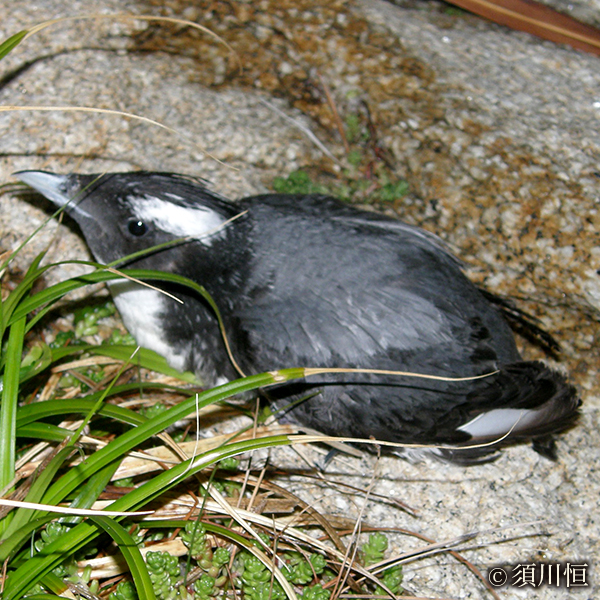
KANMURIUMISUZUME
Common Name(s)
Japanese murrelet, Crested murrelet
Order
Charadriiformes
Family
Alcidae
Scientific Name
Synthliboramphus wumizusume
(Temminck, 1835)
Kyoto Prefecture Red List
Critically Endangered
IUCN RED LIST
VU
Outline
The Japanese murrelet inhabits marine environments, diving to prey on fish. In early spring, it lays eggs in rock crevices, at the base of tree roots, and under rocks and stones.
Natural Monument
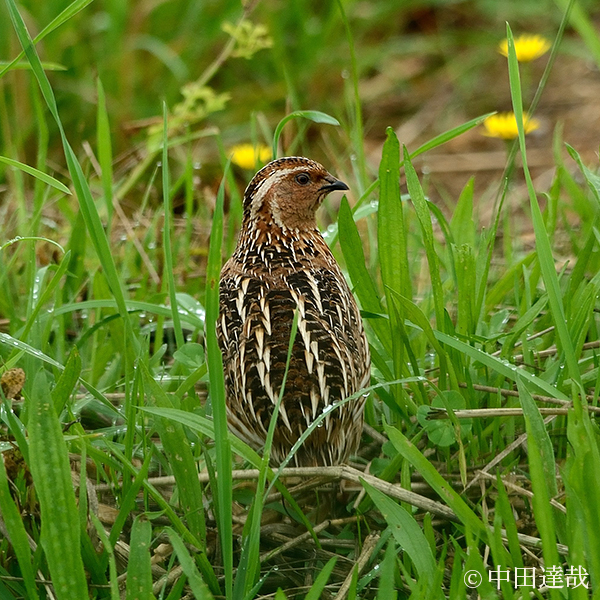
UZURA
Common Name(s)
Japanese quail
Order
Galliformes
Family
Phasianidae
Scientific Name
Coturnix japonica
(Temminck & Schlegel, 1849)
Kyoto Prefecture Red List
Critically Endangered
IUCN RED LIST
NT
Outline
The Japanese quail has a round body and a short tail. It lives in flat to mountainous grass fields and farmland and feeds on various plant leaves and seeds, insects, and spiders.
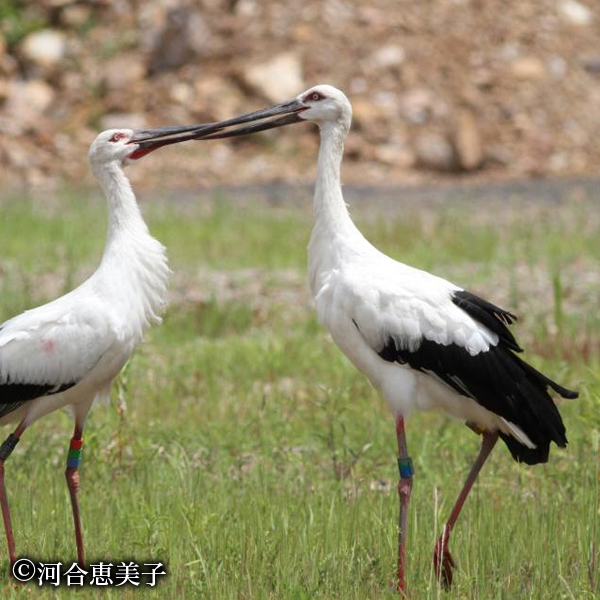
KONOTORI
Common Name(s)
Oriental stork
Order
Ciconiiformes
Family
Ciconiidae
Scientific Name
Ciconia boyciana
(Swinhoe, 1873)
Kyoto Prefecture Red List
Endangered
IUCN RED LIST
EN
Outline
The oriental stork is a species up to 112 cm in length. It hunts aquatic animals such as fish and amphibians while it strolls in shallow waters and wetlands, including rivers, moorlands, and paddy fields.
Special Natural Monument
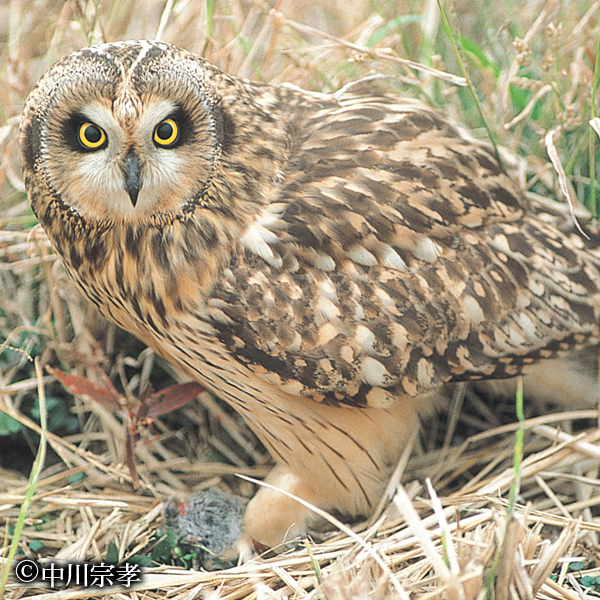
KOMIMIZUKU
Common Name(s)
Short-eared owl
Order
Strigiformes
Family
Strigidae
Scientific Name
Asio flammeus
(Pontoppidan, 1763)
Kyoto Prefecture Red List
Endangered
IUCN RED LIST
LC
Outline
The short-eared owl is 35 to 41 cm long. It passes winter on wet grasslands, as a resident. This species stays in grass during the daylight hours, becomes active at evening, and catches mice and other animals.
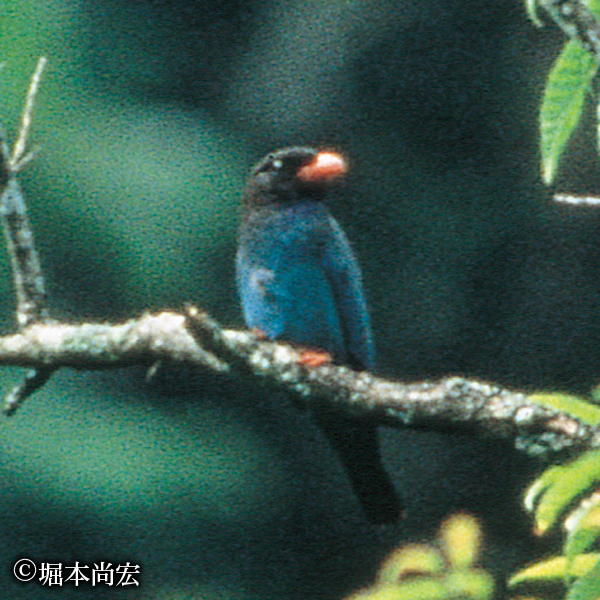
BUPPOSO
Common Name(s)
Dollarbird
Order
Coraciiformes
Family
Coraciidae
Scientific Name
Eurystomus orientails
(Linnaeus, 1766)
Kyoto Prefecture Red List
Critically Endangered
IUCN RED LIST
LC
Outline
The dollarbird is up to 30 cm in length. It has a beautiful bluish sheen depending on light conditions. This species inhabits the premises of shrines and temples and thick woods adjacent to arable areas.
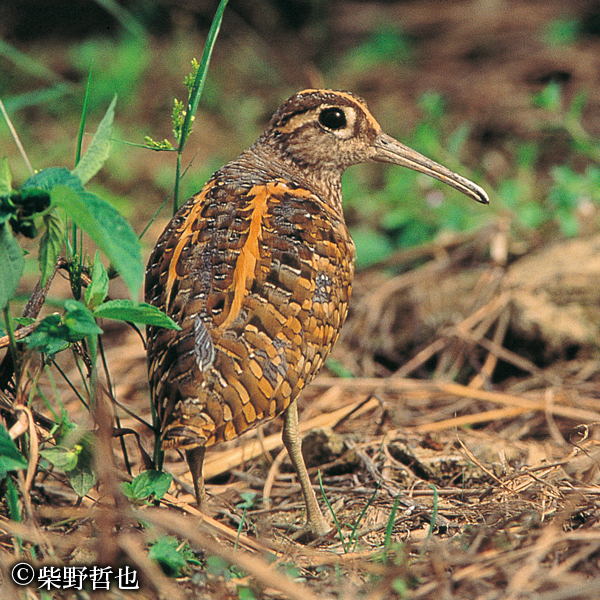
TAMASHIGI
Common Name(s)
Greater painted-snipe
Order
Charadriiformes
Family
Rostratulidae
Scientific Name
Rostratula benghalensis
(Linnaeus, 1758)
Kyoto Prefecture Red List
Endangered
IUCN RED LIST
VU
Outline
The greater painted-snipe is up to 24 cm in length. The female is more beautiful than the male. It inhabits the banks of bogs and ponds as well as year-round wet paddy fields. It feeds on insects, earthworms, and plant seeds.
Contact: Kyoto Prefecture Department of the Environment
Nature and Environmental Conservation Division
Tel 075-414-4706 FAX 075-414-4705
e-mail: shizen-kankyo@pref.kyoto.lg.jp
〒602-8570 Yabunouchi-cho, Nishiiru, Shinmachi, Shimodachiuri-dori, Kamigyo-ku, Kyoto-shi
